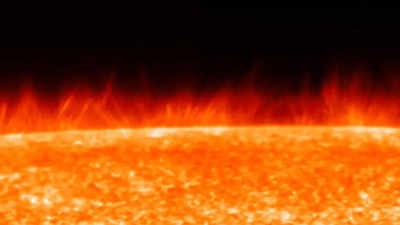-
CANBERRA: India-Australia partnership aims to bridge skill gap for future employment - April 15, 2024
-
HOUSTON: Mumbai boys in the final rounds of FIRST World Robotics competition to be held in Houston - April 14, 2024
-
MADRAS: IIT Madras NPTEL translates thousands of technical courses into several regional languages - April 10, 2024
-
MUMBAI: Shahid Kapoor opens up about the challenges faced by character actors in Bollywood - April 8, 2024
-
NEW DELHI: World Health Day 2024: Date, Theme, History, Significance and Interesting Facts - April 6, 2024
-
LONDON: Indian-Origin Teen In UK Gets “Life-Changing” Cancer Treatment - April 3, 2024
-
BENGALURU: Indian scientists unravel genetic secrets behind lumpy skin disease outbreak - March 30, 2024
-
NEW DELHI: Youngsters’ Increasing Stress Levels, Early Onset of Diseases an Alarming Health Trend: Apollo Hospitals Chief - March 28, 2024
-
MARYLAND: All About Pavan Davuluri, New Head Of Microsoft Windows - March 27, 2024
-
MUMBAI: Pyaar Kiya To Darna Kya turns 26: Kajol says THIS was the symbol of an innocent girl back then - March 27, 2024
LONDON: Indian, UK scientists unravel mystery behind origin of plasma jets on Sun
LONDON: A team of researchers from India and the UK has unravelled the science behind the jets of plasma or spicules that constantly shoot up from the surface of the Sun and are then brought down by its gravity.
The amount of energy and momentum that these spicules carry is of fundamental interest in solar and plasma astrophysics.
Led by astronomers at the Indian Institute of Astrophysics, an autonomous institute of the department of science and technology, the team has explained the origin of the spicules on the Sun using lab experiments as an analogy.
The team also used three supercomputers, all from India, to run their massively parallel scientific code. The processes by which plasma is supplied to the solar wind and the solar atmosphere is heated to a million degrees Celsius still remain a puzzle, a statement issued by the S&T department said.
The scientists elaborated that the plasma right below the visible solar surface (photosphere) is perpetually in a state of convection, much like boiling water in a vessel heated at the bottom.
This is ultimately powered by the nuclear energy released in the hot-dense core. The convection serves almost periodic but strong kicks to the plasma in the solar chromosphere, the shallow semi-transparent layer right above the visible solar disk.
The chromosphere is 500 times lighter than the plasma in the photosphere. Therefore, these strong kicks from the bottom shoot the chromospheric plasma outward at ultrasonic speeds in the form of spicules.
Sahel Dey, researcher from IIA and first author of the study, said, “The solar plasma can be imagined as threaded by magnetic field lines, much like the long chains in polymer solutions.
This makes both the systems anisotropic, with properties varying with the direction in space.”
IIA director Annapurni Subramaniam said, “This novel coming together of solar astronomers and condensed matter experimentalists was able to reveal the underlying cause of the poorly understood solar spicules.
The power of unifying physics that connects physically disparate phenomena will prove to be the driving force of much more interdisciplinary collaboration.”
























